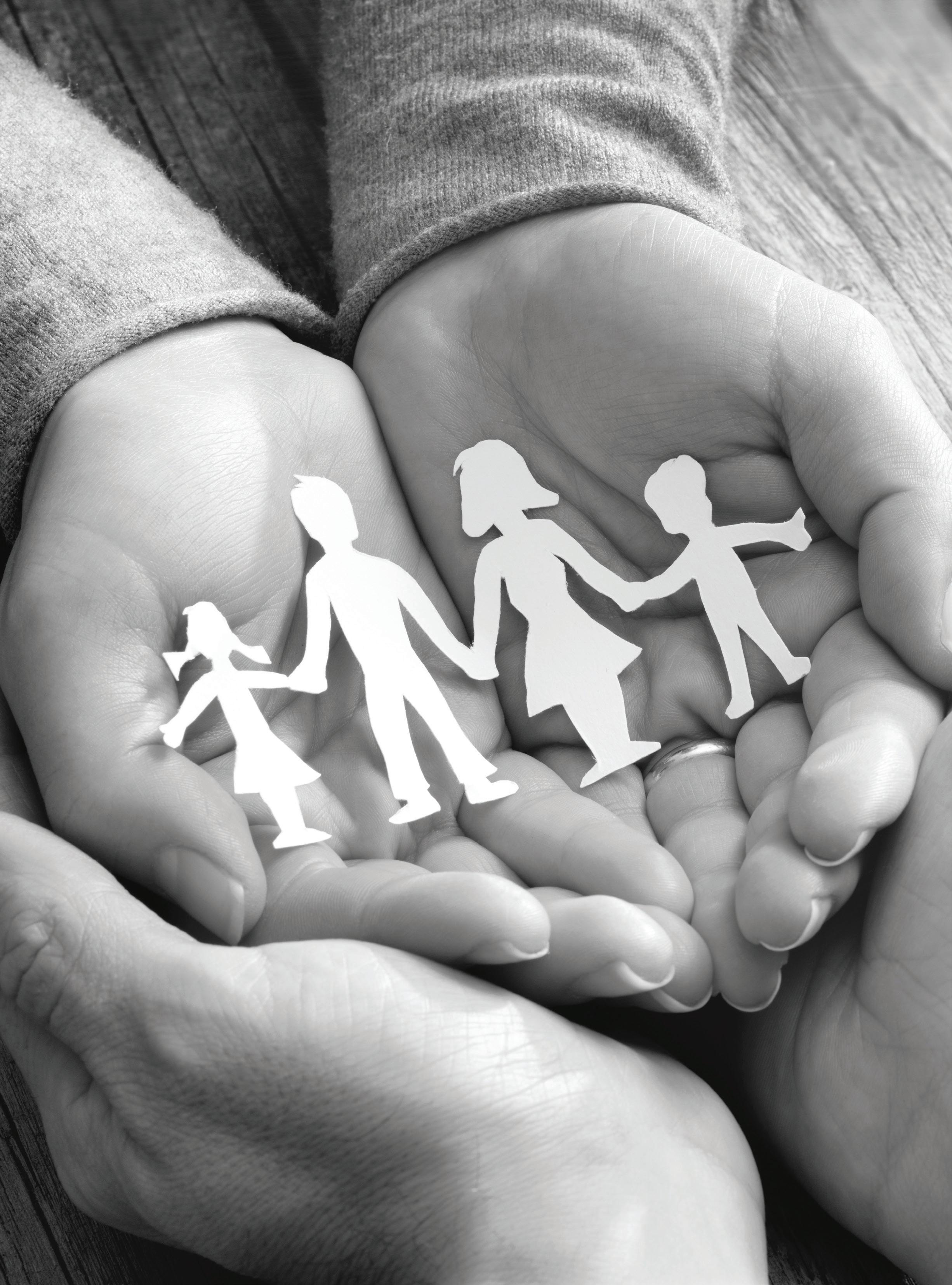
6 minute read
Protection for our communities, causes


Advertisement








Protection for our
communities & Causes
Life insurance is generally thought of as one way to protect ourselves or our loved ones. While those are the most common reasons people purchase life insurance, its bene ts also protect our communities and the groups that we hold dear. Here are 10 ways that life insurance protects our local area and causes:
1. Life insurance protects communities by easing the enormous costs of supporting survivors of a deceased
member’s family. Before life insurance became widely available and a ordable, survivors often were forced to rely on community charity. A few ways that states and counties tried to do this was by operating orphanages and poor houses — or by relying on church-run orphanages — for those in need. By taking responsibility for our own loved ones’ nancial needs, life insurance eases the strain on local charities and government social services.
2. Life insurance encourages healthier behavior.
Certain activities put people at higher risk. Tobacco smoking is one example. Studies clearly show far higher cancer and death rates among people who smoke cigarettes, cigars or pipes. Data also indicate “second-hand smoking” harms others. Charging higher life insurance rates for smokers wasn’t always popular, but life insurance companies led the change in how communities think about smoking and have helped dramatically reduce lung cancer and related deaths.
3. However, life insurance also protects important
work that involves higher risks. Some risks are important for a society’s bene t. Who would ever sign up to be a tunnel builder, a submariner or a deep-sea diver if they knew their family would be left destitute if they died? While the premiums are higher in order to match the risk, life insurance for these more dangerous occupations is available. at facilitates completion of risky but important work, which in turn enables entire regions to progress.
4. Life insurance protects our communities’
businesses that rely on key employees. e death of some employees, such as a company’s partner or chief operating o cer, might add a scal crisis on top of a personal loss. e business might face liabilities, shortterm cash problems, or other instability. e business might not survive. In such cases of prospective nancial hardship, a company may have an insurable interest that enables it to insure such key employees. at helps protect the company’s future — plus its other employees’ jobs.
5. Fraternal life insurance groups help protect their members' well-being by providing social activities,
and even local groups. Within the Society, these groups are called “arbors.” Activities might take various forms including celebrations, sightseeing trips, visiting shut-ins, dinners, attending baseball games, or contributing to assist elderly members, widows or orphans. Historic cases are recorded of arbors pitching in to harvest crops for a sick member. Fraternalism is a type of social capital that members enjoy, a cooperation that multiplies what each person alone might be capable of. Examples of current activities can be found in this quarter’s “Arbors in Action” section.
6. Life insurance societies plow earnings back into
building up their communities. Because they are owned by members and not by stockholders, fraternal life insurance societies use their pro ts to bene t members’ communities. At Gleaner Life, this is done in several ways. One way is for individual members to use Give and Grow grants for local projects.

Another way is through arbors, which help meet local needs with cash donations as well as community service projects such as cleaning up parks, providing student lunches, feeding the homeless, literacy projects, food drives, school supplies for underserved residents and more. For Gleaner Life, benevolent good works have been a primary function of the Society since it was chartered in 1894.




7. Life insurance can be used to protect our causes
after we’re gone. Naming a group as the bene ciary of our policy’s death bene t can assist that group in continuing its good works. at may be especially important if the policy owner was a key volunteer whose death will leave a hole in its operations. is approach also gives the policy owner exibility to change their mind. Before their death, they might choose a di erent bene ciary, or they might decide to use the policy in a completely di erent way.



8. Life insurance can also be used to protect
our favorite causes while we’re alive. ere are several ways to do this. One way is by gifting an organization with a paid-up whole life insurance policy. It could be a policy purchased especially for this reason, or it could be a policy the owner no longer feels they need. Changing ownership is not something that can be reversed, but if the group is a quali ed non-pro t the donor could be eligible for a tax deduction the year when the transfer occurs. ere also are solutions that enable a group of people who are members of the same non-pro t to do this,
9. Life insurance can protect access to further
education. One of a community’s greatest assets is its students, but that asset can go undeveloped if students can’t a ord the education or training to put their talents and passions to best use. Life insurance can help. Whole life policies develop cash value that can be borrowed for college or training. Gleaner Life also o ers a college-bound waiver on certain universal life solutions, helping to pay for college expenses by not imposing a surrender charge. Of course, if an insured family member dies, the death bene t can also help ensure that students need not abandon their education. In addition, the Gleaner Life Insurance Society Scholarship Foundation awards scholarships annually. ousands of members have received scholarships over the decades.



10. Life insurance protects a community’s peace
of mind. While some communities re ect a sense of anxiety and fear, other regions and organizations seem to possess calm and assurance. People in both places are aware that there will be di culties and troubles ahead. e key di erence is that one group is unprepared and spends its time worrying about impending disasters. e other group is prepared with solutions for unpredictable risks and challenges. e latter group can move ahead, living life to the fullest.








